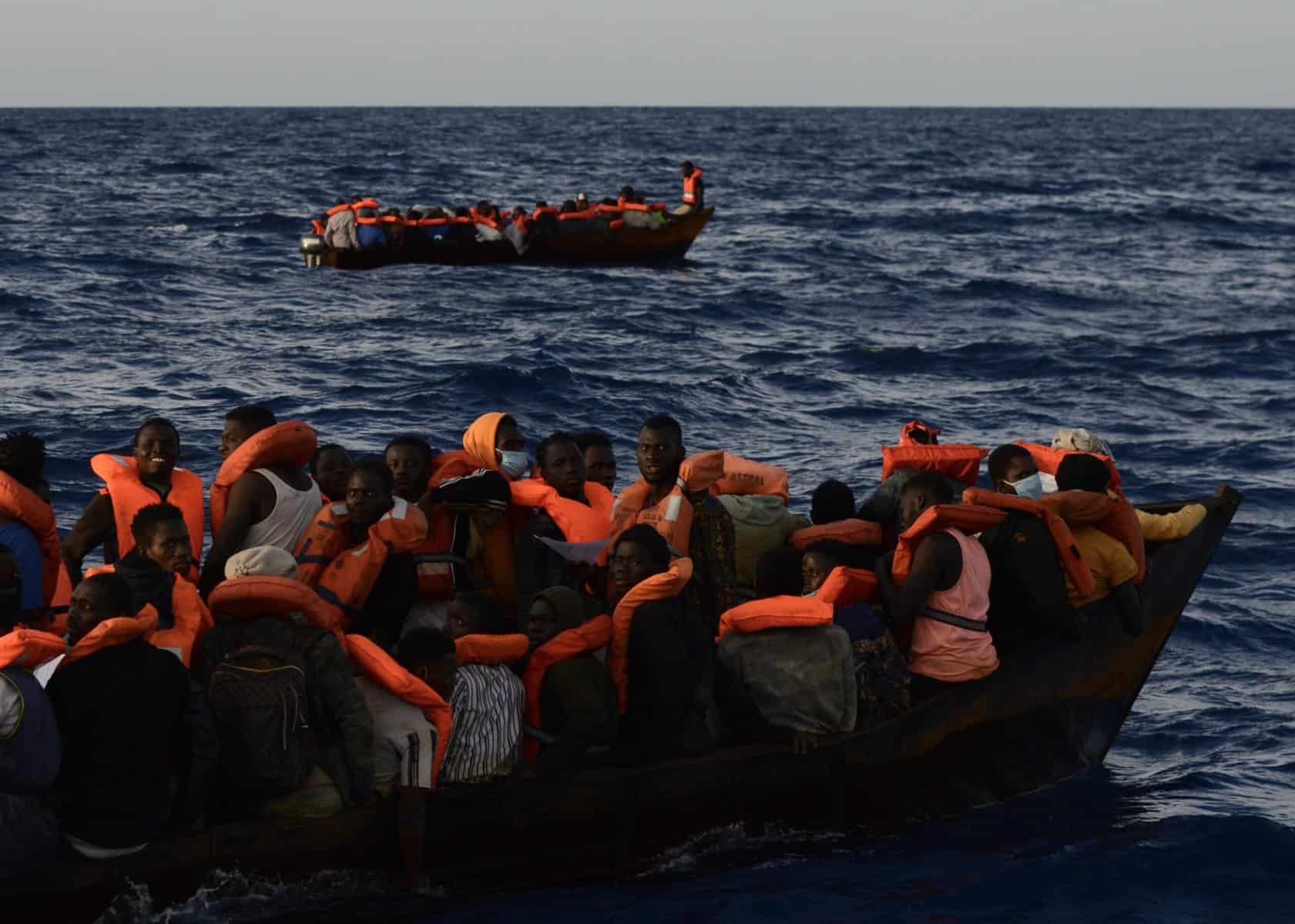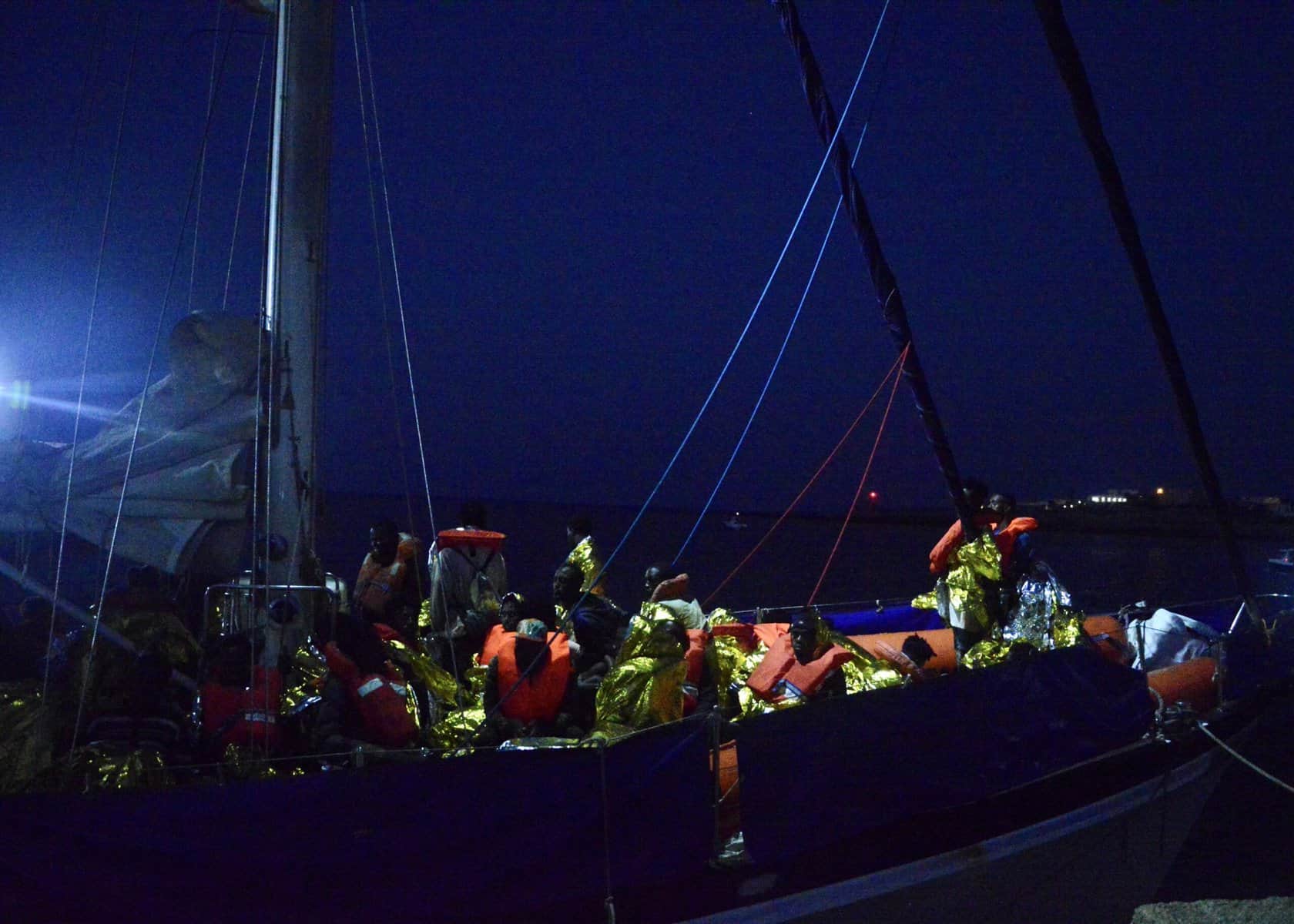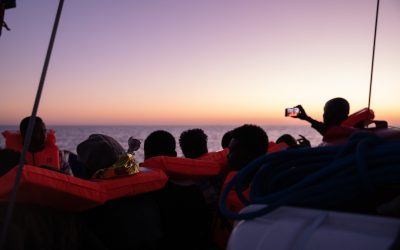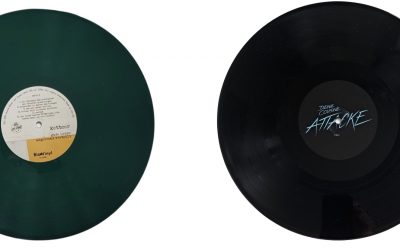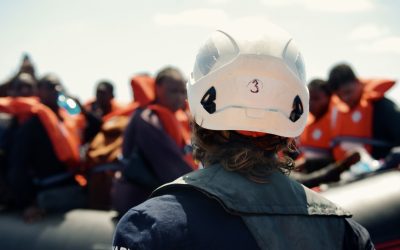The seventh deployment of the Nadir this year was marked by Storm Daniel, which swept across the Mediterranean and delayed departures from the North African coastal regions. Once the sea had calmed down again, even more people set off: On September 12, over 6,000 people reached Lampedusa within a day. In the midst of this ambivalent time, the crew of the Nadir was able to assist around 534 people on 12 boats in distress in just a few days in the area of operation.
Rescue at the last moment
Nevertheless, we encountered several boats on the third day at sea. Early in the morning, we came across a boat with 46 people on board. We accompanied them for hours towards Italy until the Italian coastguard came to rescue the people. Worried that no boat would make it through the night unscathed in the increasing wind and waves, we continued to keep an eye out in the area. A little later, three dots appeared on the horizon – boats with refugees on board. We approached the first boat: 44 people, including six women, two babies and a small child. We gave them life jackets and together with the boat we made our way to the next distress at sea, just a few hundred meters away – another 41 people. The ever-increasing waves were already penetrating the boat. We stabilized it and informed the authorities, who were already on their way. Fortunately, when another boat appeared on the horizon, the Mare*Go of the NGO togetherland for support and took care of the third boat. Z wei Italian Coast Guard and Guardia di Finanza ships approached shortly afterwards – the relief was great. But while the second boat with 41 people on board was rescued by the coast guard, the unstable metal boat sank within seconds and a dozen people were in the water. Fortunately, we had given them all life jackets beforehand and the coastguard managed to rescue them. The coastguard also took the people who had been looked after by Mare*Go to Lampedusa. We now had to return to the island to seek shelter from the weather.
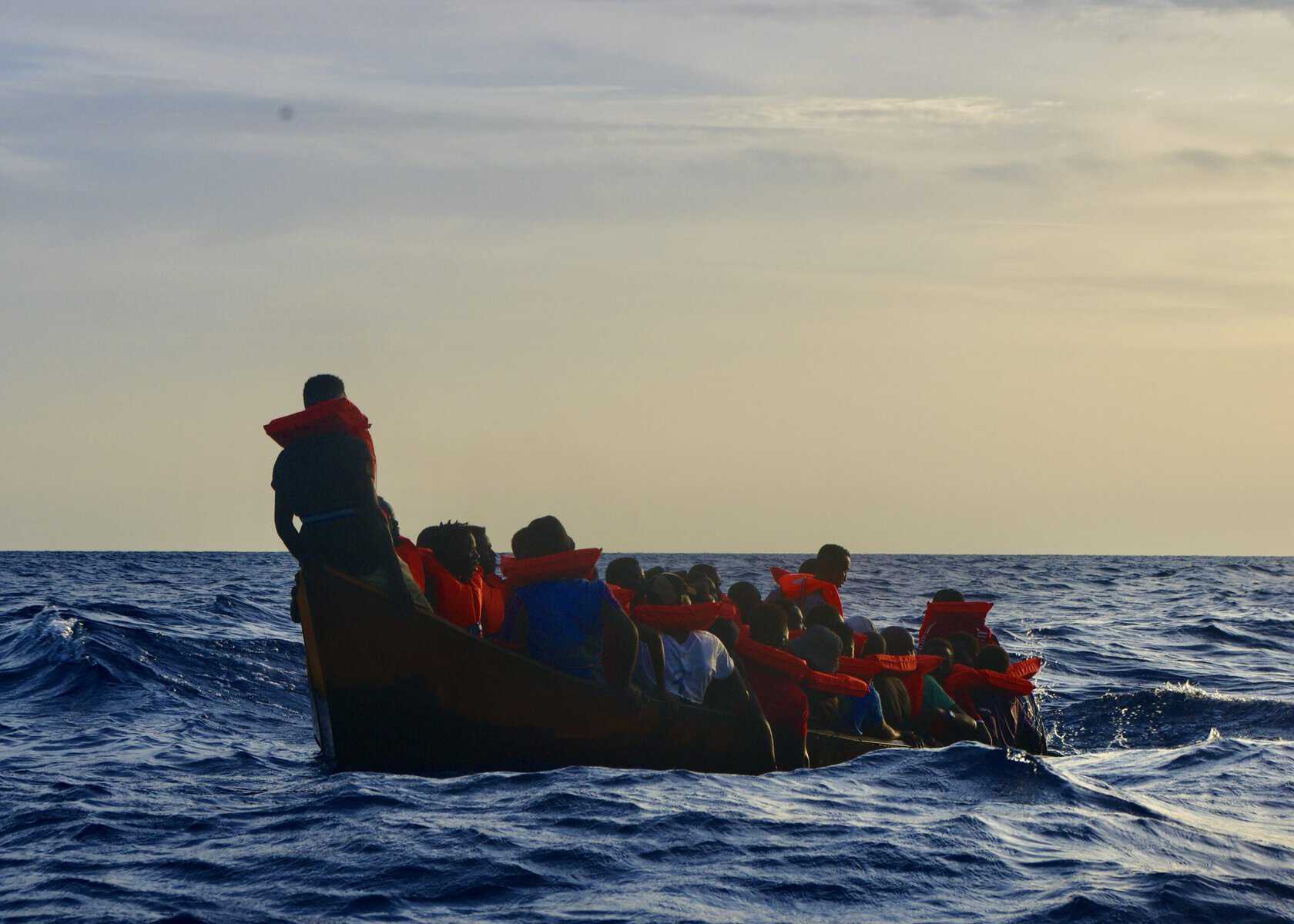
While Storm Daniel was raging over the Mediterranean, we took the opportunity on Lampedusa to exchange ideas with our partner NGOs. We met the crew from Pilotes Volontaires, from Seabird and Aurora the NGO Sea Watchspoke with Open-Arms and were able to share our experiences with Maldusa share. We sought shelter in the shade of Lampedusa for a whole four days until the storm moved further east.
When we set sail again at midday on September 9, we were delighted to hear the news that a new NGO ship – the Sea Punk 1 – would be in the area for the first time. The next day, we were able to rescue 44 people in a joint operation and bring them safely on board the Sea Punk 1 including 16 minors, six women and a baby. Shortly afterwards, the people were taken on board by the Italian coastguard.
40 people missing
Not much later, we came across another metal boat with 44 men and one woman on board. The people were visibly upset, they told us that they had seen a capsized boat hours before. All the people were swimming in the water and calling for help. We tried to reconstruct the approximate location of the shipwreck and informed the Sea Punk 1, as well as the responsible authorities about the boat involved in the accident. In addition to the Sea Punk 1 the Frontex reconnaissance aircraft Osprey 2 went on the search – unfortunately without success
We accompanied the boat next to us until the pitch-black night forced us to take the people on board. Quite a few spoke to us about what they had witnessed. Some knew the people who had been in the water, as the two boats had set off from Tunisia at around the same time.
We reached Lampedusa shortly after midnight, but our guests were only allowed to go ashore early in the morning, as the survivors from the coastguard ships landed first. These were already the first signs of things to come: an unusually high number of boats arriving.
Triage, 239 people and a cargo ship
With the aim of returning to the area of operation as quickly as possible, we left Lampedusa again at around two o’clock the next night. But we didn’t get far: the island was still in sight when we came across a boat with around 50 people on board. We accompanied it into Lampedusa’s harbor and set off again straight away. But we didn’t get a mile further the second time either – we found another boat with 36 people on board and no working engine. Together with the boat, we watched as dozens of boats became visible around us as the sun rose. Countless people were already outside the port of Lampedusa on the morning of September 12.
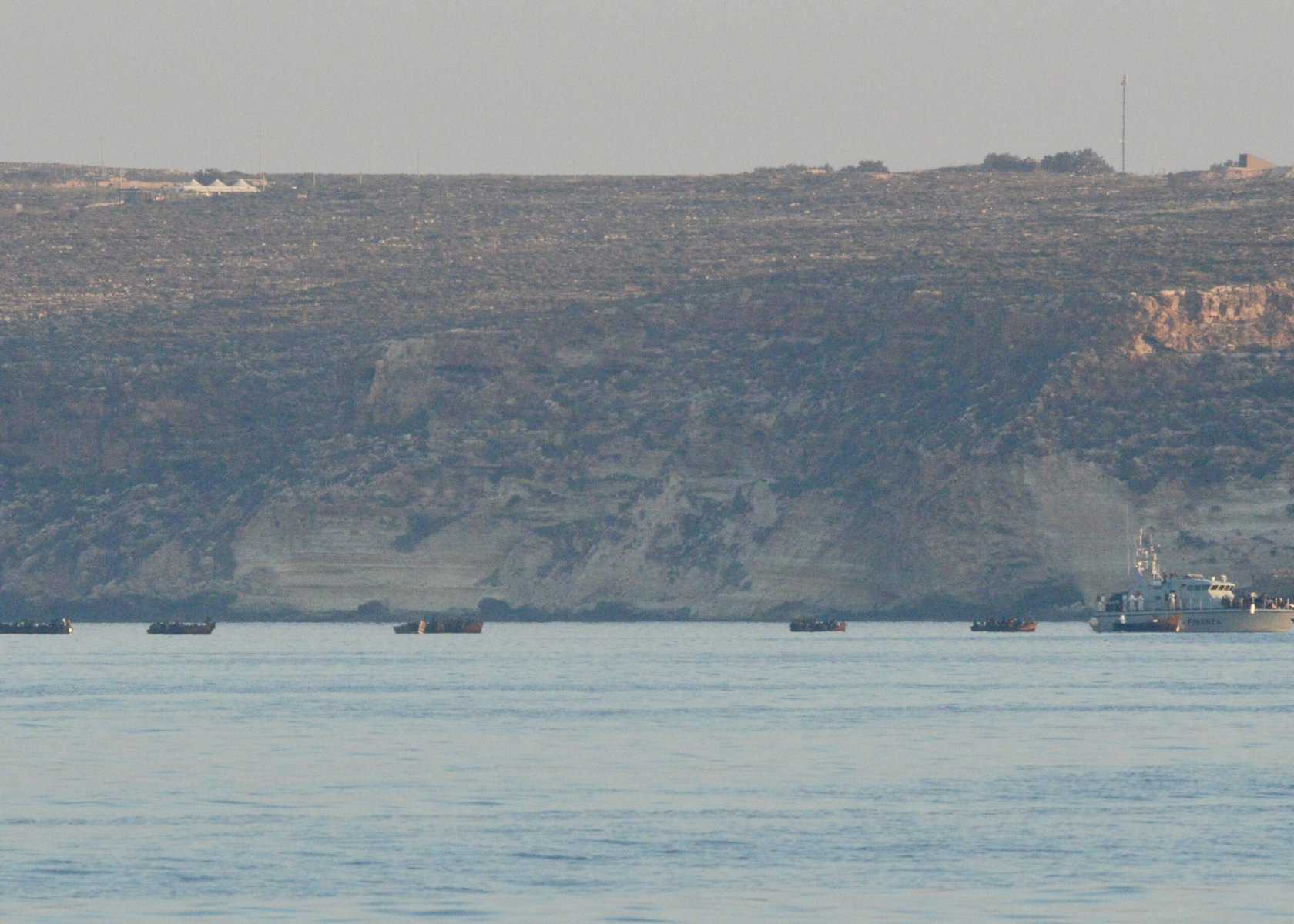
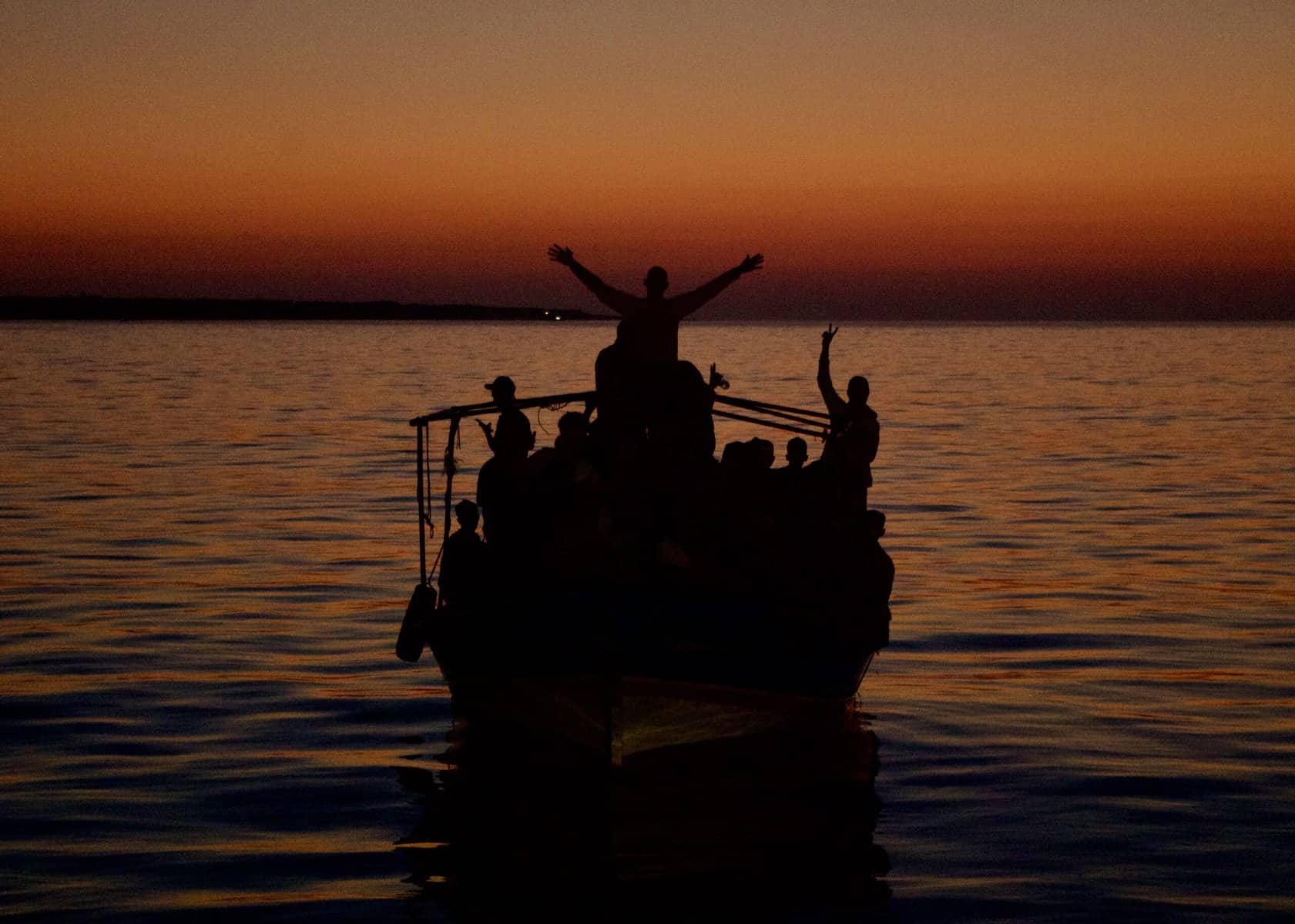
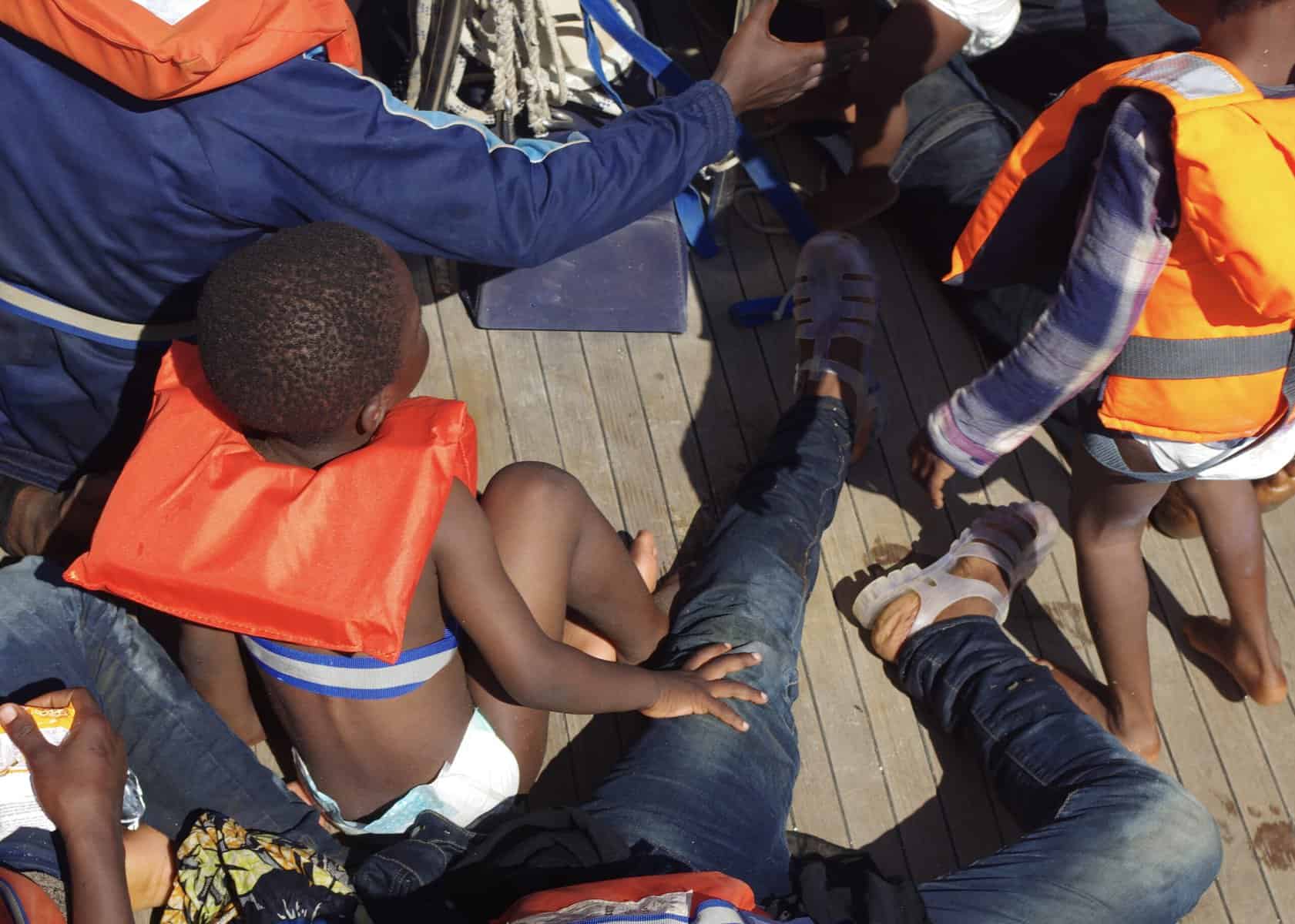
We took 53 people on board the Nadir so that we could take care of medical cases, especially the children. We set off at around nine o’clock in the evening and reached the island of Lampedusa again shortly after midnight.
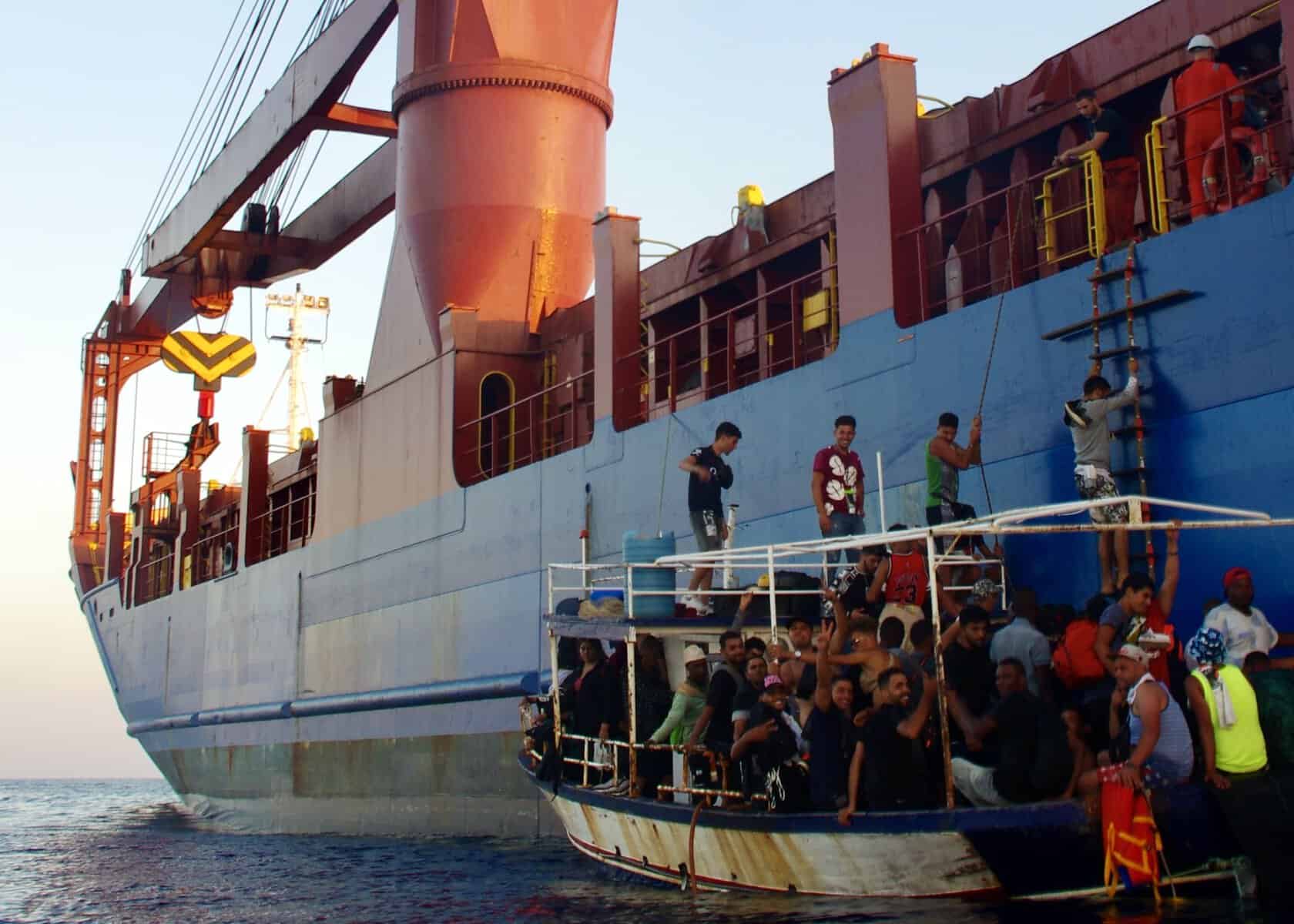
Lampedusa, September 12
While we waited for hours for people to disembark the Nadir, we later learned that at around 4:18 am, just a few meters away from us, an incoming boat had capsized in the harbour. A baby could only be rescued dead from the water, all the other passengers survived.
Over 6,000 people arrived on the island within one day – more people than there were inhabitants on the island. Lampedusa looked different on September 12. The refugees could not be hidden in the island’s hotspot. They were visible, standing on the jetties, waiting for buses and ferries, and new boats kept coming into the harbor. The Nadir was anchored after the operation and we watched what was happening. Opposite us, arriving people were crowded together on a jetty, threatened by the police with batons, the sun was burning and people were desperately jumping into the water, swimming over to us, asking for water. NGOs were not allowed to help, not even the Red Cross was allowed to reach the survivors. Next door, summer tourists were sunbathing or taking small speedboats out to refugee-seeing to take pictures of the arriving boats. Lampedusa’s city council declared a state of emergency. It was a picture of powerlessness and disillusionment as survivors arrived here in Europe.
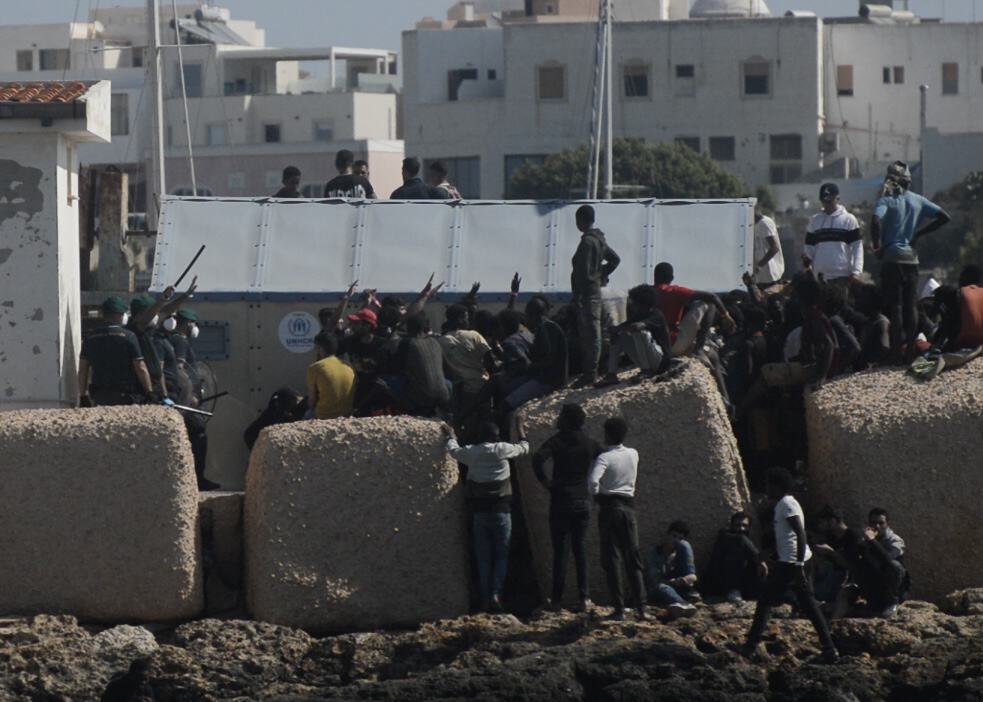
The seventh operation marks a climax that has come to a head over the past few months – a climax of political failure. The fact that the small island of Lampedusa, of all places, has become a symbol of this failure is paradoxical in this sense, as it is still one of the few places where state sea rescue is attempted. However, the resources from Rome and the political will are lacking at every turn, so what happened in Lampedusa on September 12 is by no means surprising.
Photos: Paula Gaess, Communications Coordinator at the Nadir
IBAN: DE 18 4306 0967 2070 8145 00
BIC: GENO DE M1 GLS
GLS Gemeinschaftsbank eG
